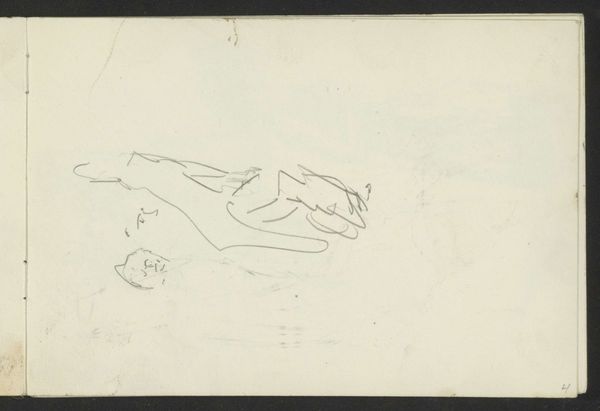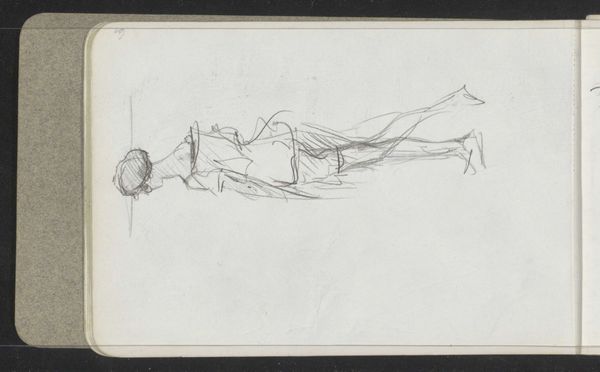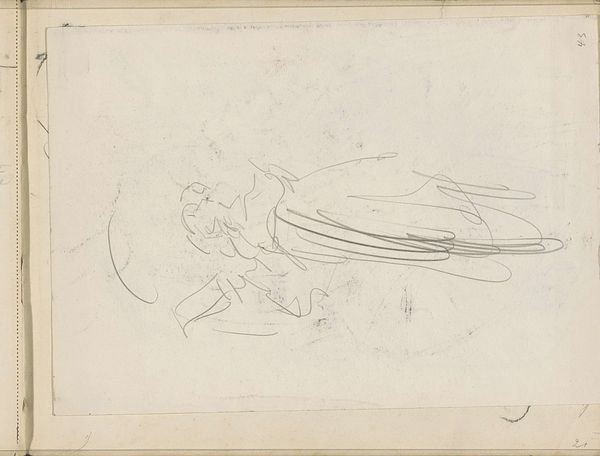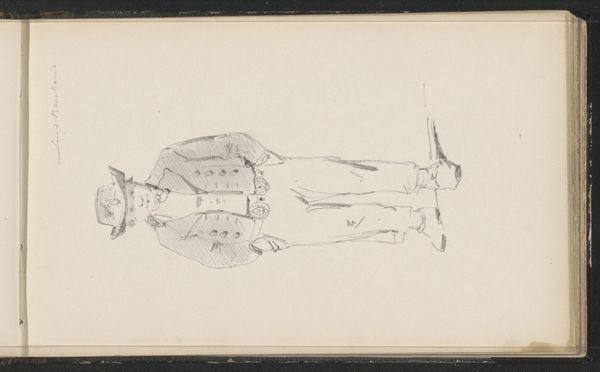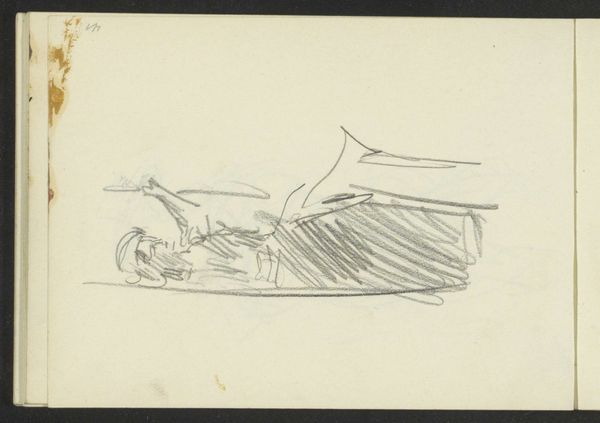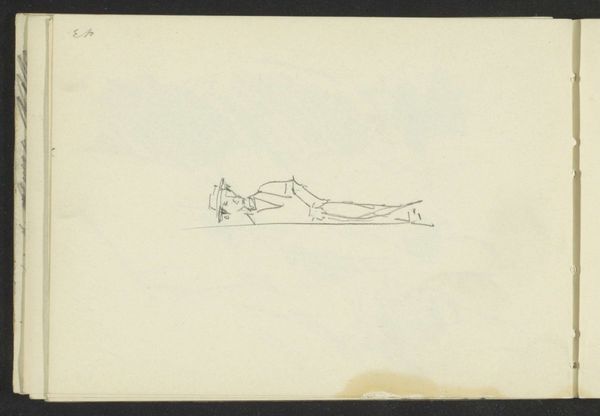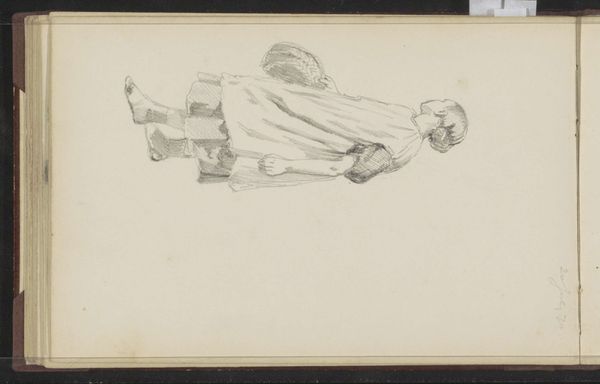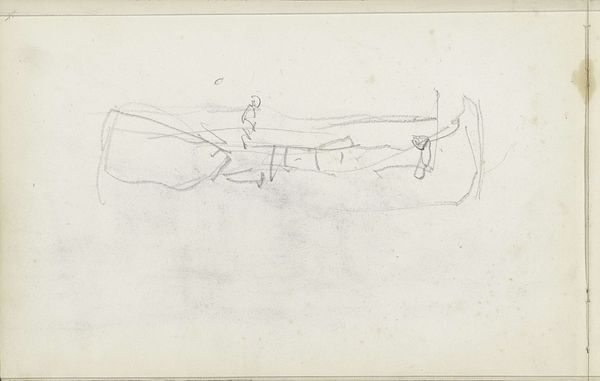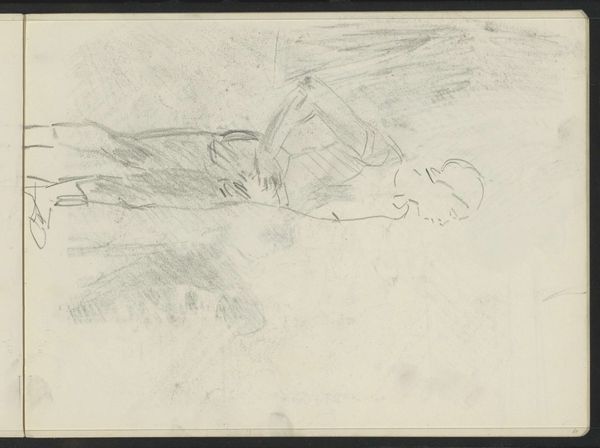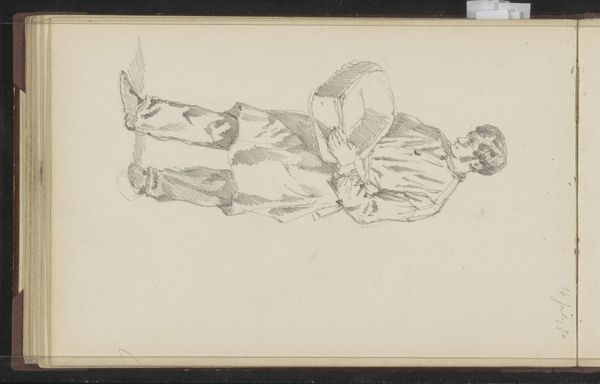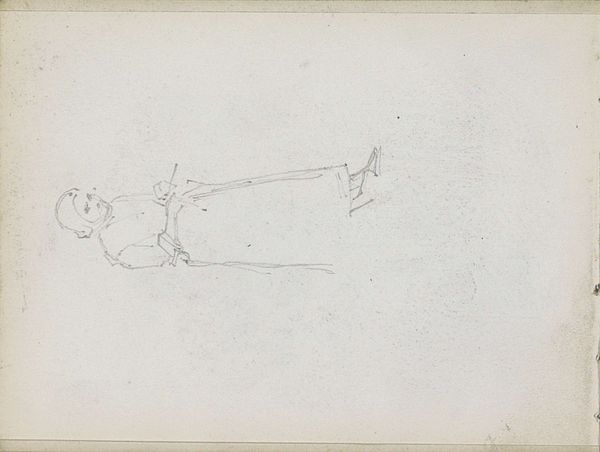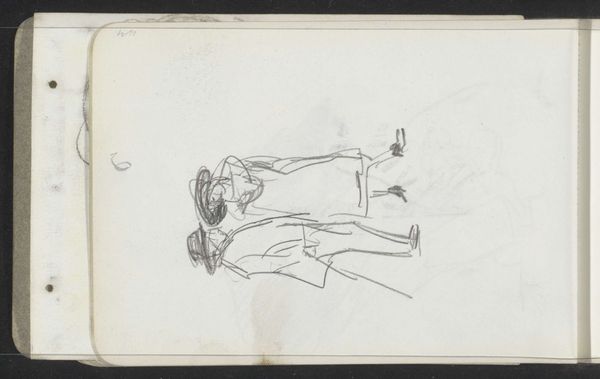
Copyright: Rijks Museum: Open Domain
Curator: Here we have a pencil drawing by Isaac Israels, titled "Standing Woman," estimated to have been created between 1875 and 1934. It's currently part of the Rijksmuseum collection. Editor: Well, my first impression is that this sketch is incredibly ephemeral. The pencil lines are so light, almost hesitant. Curator: Indeed. This sketch offers an intimate glimpse into Israels’ working process, as we know he focused on capturing fleeting moments of modern life, often depicting women in contemporary settings. He's a known impressionist after all. Editor: Yes, and you can definitely see it here. It’s less about precise representation and more about conveying a sense of movement and light. Look at the way he suggests the form of the figure with such minimal detail. There is nothing academic about that approach; this is more personal. Curator: Right, this wasn't intended to be a finished work of art. These sketches, found within notebooks, were vital tools in his broader practice. The incomplete nature of this piece gives us insights into the aesthetic strategies he utilized, particularly his desire to capture his sensory impressions and ideas with swift, understated execution. The fact that these works exist within books indicates a direct link to an artistic evolution as it happened. Editor: The open space around the figure is just as important as the lines themselves. It creates a feeling of lightness and airiness that amplifies the delicate feeling, so a more involved drawing may ruin the image in itself. This balance in form and space speaks volumes. I imagine this was completed in mere seconds as someone just walked past. Curator: I completely agree. Israels was deeply embedded in the cultural currents of his time, moving within the cosmopolitan environments of Amsterdam, Paris and London, and he reflected those encounters within his artworks. This quick sketch showcases Israels' connection to the present, his interest in ordinary urban people and how social class mingled into urban daily life during this historical juncture. Editor: It’s a deceptively simple drawing that, the more I look at it, the more I find compelling. The restraint becomes almost monumental in its suggestion. Curator: Exactly, I find Israels' practice endlessly intriguing for what his works expose about the role of ordinary people in modernism's rise and expansion in Europe. Editor: I appreciate seeing how little is sometimes enough to communicate such profound artistic meaning.
Comments
No comments
Be the first to comment and join the conversation on the ultimate creative platform.

